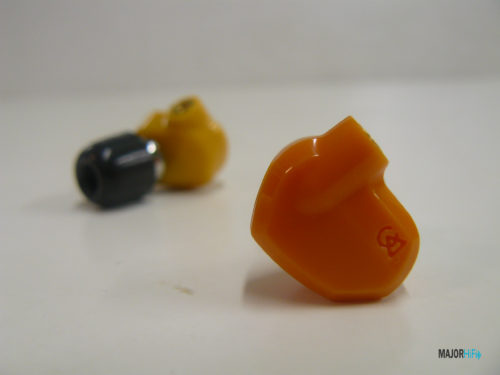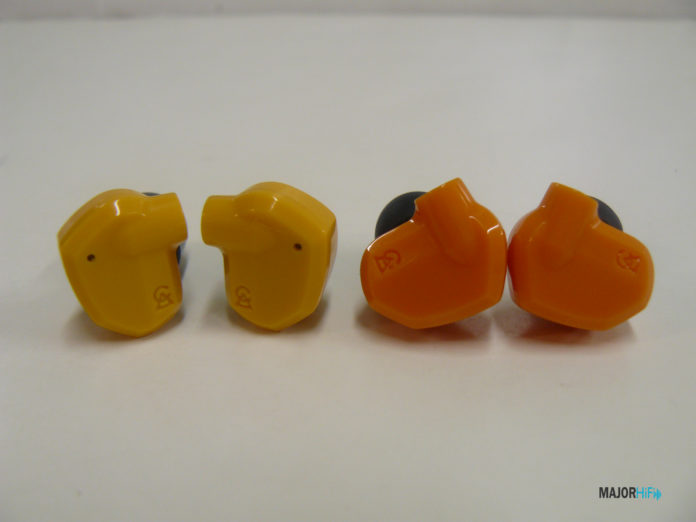Recently, Campfire Audio made its first big release of the year. The Satsuma and Honeydew have landed in the IEM market and are their most affordable earphones yet. Each pair has the same design aside from which coat of paint they sport, but they both have their unique sound signature. When two similar models are released from the same brand and in similar price ranges, a comparison between the two is almost natural. Let’s see what exactly sets these two IEMs apart from each other.
What You Get
Campfire Audio has packaged its IEMs with most of the same accessories from a few new models now. The Satsuma and Honeydew both include the same materials, with foam and silicone ear tips, cleaning tools, logo pins, carrying cases, and drawstring bags.

Look and Feel
Taking a look at both models from the outside, you might think the Honeydew and Satsuma are just the same models with a cosmetic variation. While they might be hard to tell apart, a few distinctions might help differentiate the two. Firstly, the Honeydew has a tiny hole on the corner of each earpiece while the Satsuma doesn’t. I sometimes got confused which color was which since they’re both so similar, but the Honeydew has a yellow shell with the Satsuma sporting orange. Both IEMs have this single vibrant color that perfectly contrasts with the stainless steel spout for a nice aesthetic flourish.
The design for the housing is a new construction for Campfire, and in my opinion, it’s the best fit they got. Campfire introduces a much more ergonomic fit here and holds firmly in your ear cavity without any obstruction. There’s little to no fatigue, even though many hours of listening. Each pair has this exact same level of comfortability, and even though the shells makeup is more plastic than their usual aluminum bodies, these IEMs still hold a level of integrity to them that help advances them past your standard affordable earphone.

Design
It’s the interior components of the Honeydew and Satsuma where these IEMs start to show the first major differences. While each acoustic chamber is 3D printed, they both support different driver systems that help shape their respective sound signature. The Honeydew uses a 10mm dynamic driver, while the Satsuma features a single, ported balanced armature.

Output
When it comes to pure delivery of signal flow, there are few stronger than Campfire Audio. The Honeydew definitely gives you the meatiest signal, but both IEMs should supply ample loudness to a variety of systems. In comparison, the Satsuma is a lot more reserved in its power, but can still achieve a comfortable level of volume. You shouldn’t have an issue powering these IEMs from a standard headphone jack on a laptop or smartphone. The Honeydew can run a bit hot, so watching your volume control before you hit play is significant regarding harmful amplitudes. Headroom is plentiful in both models, with a generous amount of room for gain adjustment.

Soundstage
The Honeydew and Satsuma both have solid imaging, meaning the stage is less spacious and more accurately positioned. This creates a more full tonality, with hard positioning. There’s still a level of width maintained though, and clear separation is still a significant factor, more so in the Satsuma than the Honeydew. However, the Honeydew has a superior height compared to the Satsuma, which can appear a bit too straightforward at times.
Neither soundstage reaches too far beyond its central image, but the Honeydew is a bit better at leaking out past the boundaries. With that being said, the Satsuma is more articulate in its layering and separation. It plays better with music that contains a lot more elements, as individual performances can be a lot more clear than on the Honeydew. The darker tone of the Honeydew matches its soundstage, but impresses me in spurts, while the Satsuma is the most consistent in its clarity.
Low End
With the Honeydew, it’s all about the low end. While the Satsuma comes close to its textured properties, the Honeydew has by far the greater bass impact. The resonance is rich and meaty, coming off with energy and slam. It’s an IEM designed for electronic music and bass-heavy genres. However, this can also limit the Honeydew’s accessibility, as the exaggerated lows can also be a fault. The Satsuma was more satisfying to me in its tightness. You still have those rumbling sub-bass frequencies, but much smoother.
Mids
Lower midrange frequencies are heavily accentuated on the Honeydew, creating that dark timbre that’s consistent in these IEMs. There’s a delightful amount of warmth to the Honeydew too, but its resonance sometimes muddies the sound signature and distracts from the clarity. In contrast, the Satsuma has a much cleaner midrange timbre. It showcases much more detail and articulation, especially in the upper mids. There’s a lot more crispness in the IEMs tonality here, featuring a significant amount of texture and coloration.
Highs
Treble frequencies aren’t the strongest on the Honeydew. The response is much duller here, aside from some piercing qualities that help spice things up a little bit. With the Satsuma, you receive some nice, sparkly details and upper-end shine. It creates a more fulfilling sound signature, as the timbre appears a lot more complete on the Satsuma, whereas the Honeydew feels a bit more hollow.
Summary
There’s a lot to like about both the Satsuma and the Honeydew. Campfire Audio has served up some good competition here, with both earphones standing out on their own, with unique sound signatures. For my personal taste, I prefer the Satsuma’s more reserved output and more present high-end compared to the Honeydew’s heavy bass focus. However, I think a lot of listeners will enjoy the Honeydew’s punch compared to the Satsusma’s more relaxed response. For a $50 price difference, it’s definitely not a choice you’ll have to ponder hard-on, but whichever one you choose, these are both great entry-level IEMs that serve their purpose well.
The Campfire Audio Honeydew and Satsuma are available at Audio 46.
MAJORHIFI may receive commissions from retail offers.








